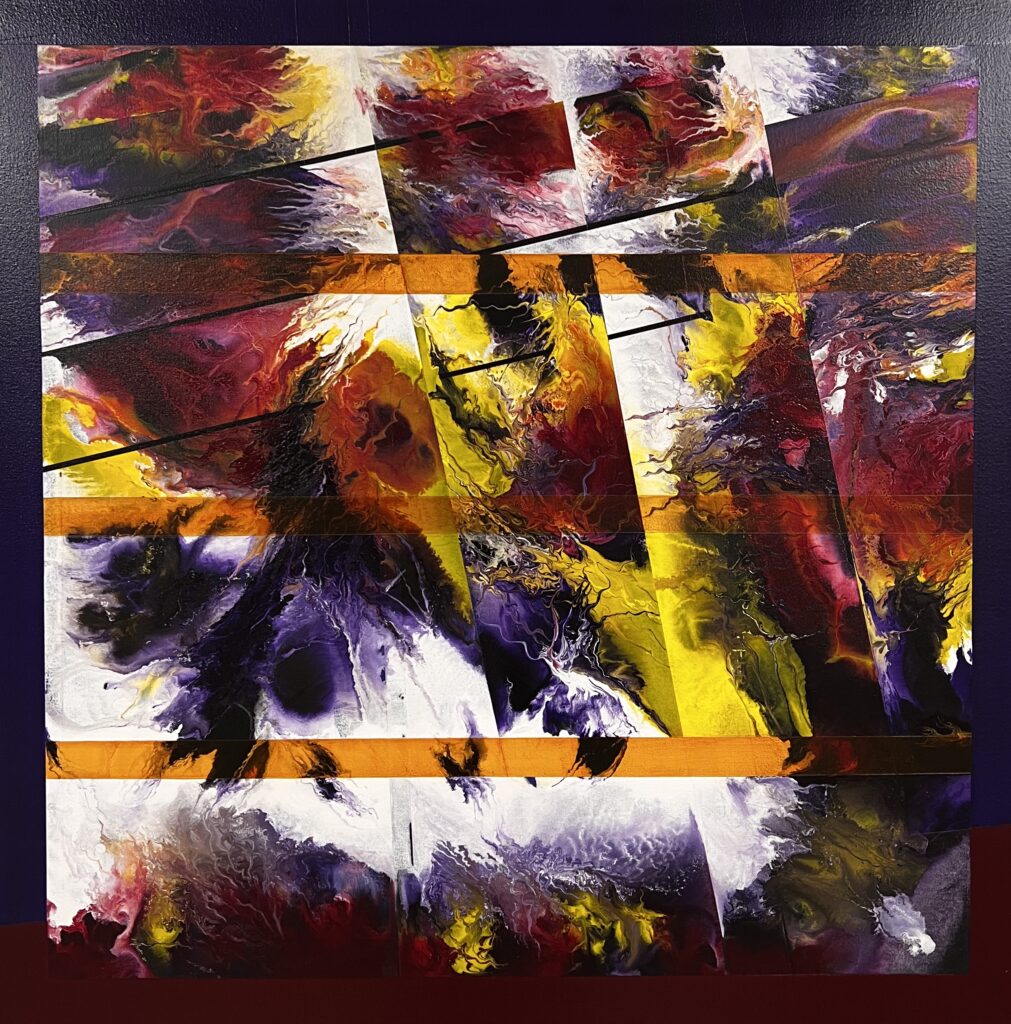The humming air

It’s There in The Humming Air, Bill Santelli, acrylic on canvas
On a quick visit to Bill Santelli’s studio last week, I saw a recent painting that knocked me out. In my Instagram post about it, I touched on some of the things that really work and give it a sense of natural depth, as if I’m seeing an actual scene in nature, with a slightly altered mind, as it were. There’s a shape that reminds me of a sunflower and the tendrils of paint reminding me of sprouts—I called them fractal rivulets in the post. The presence of white space, and the shape it assumes throughout the image, has a very kinetic unity and tension. I love the relief of white space in any abstract—and the shape the total white space assumes, sort of rearing up in the center of the painting—the way it sets off highly saturated color and offers a respite, a bit of emptiness that plays off the intensity of what’s going on around it. It really works here. The diagonal lines, in sets of three, on a bias, rather than a balanced grid, also contribute to the sense of energy and movement and surprise.
Bill: It’s called It’s There In the Humming Air. I think I did talk to you about this. I was going to do this other painting, and it’s the first time I’ve painted over something. Underneath it was a painting of the bones of a church I took a picture of in Washington DC. It was like a Jehovah’s Witness or something, not a cathedral, a glow coming out of the windows as we drove by. It was a blurred shot I took as we drove by. The painting never got going. Then you and Bill and I were at Bill’s house and we were talking about painting over stuff and I said I had this painting and I was going to paint over it. There was an outline of the church, so that’s why there’s the slant.
That has a lot to do with it: the asymmetry of the three lines and three here, so that it brings your eye up to the upper right corner. And it has a lot of white in it. This has a lot of white compared to what you usually do.
B: That’s a good remark, that’s what I was feeling. I got over here and there wasn’t much of the underpainting of that church and there’s still an outline here of a window and I was thinking this needs something different and didn’t want to keep going with the red and the yellow, so I went with white.
It looks so much like enamel, not acrylic. Like the Alkyd paintings of the color field painters.
B: Some of these acrylics are glossier when they dry. We’ve had this conversation ongoing, the whole idea of hard-edged painting, getting rid of the personal connotation in the title. I was saying last time we talked I’ve been thinking of this other series of hard-edged painting with no subject, just color.
Just improvisation. And that’s what I do with the taffy. I’m not trying to say anything. I’m just getting it to work formally and by the time I’m done, this is a field with the sun over it or it has some other resonance. I don’t start out trying to express anything definite.
B: It’s so interesting, I’ve been watching videos of Bryce Marden, one is an interview at the Tate Gallery and another is a lecture he gave in conjunction with the show. He’s articulate. He was talking about numbers and the importance of the numbers, and rules, and how he approaches painting. I’ve been marveling at the surface of his work. He said it’s a process of mixing turpineol, the oil paint and beeswax. The paintings never really dry. He goes back over the surfaces to level them off with palette knives or whatever.
Comments are currently closed.